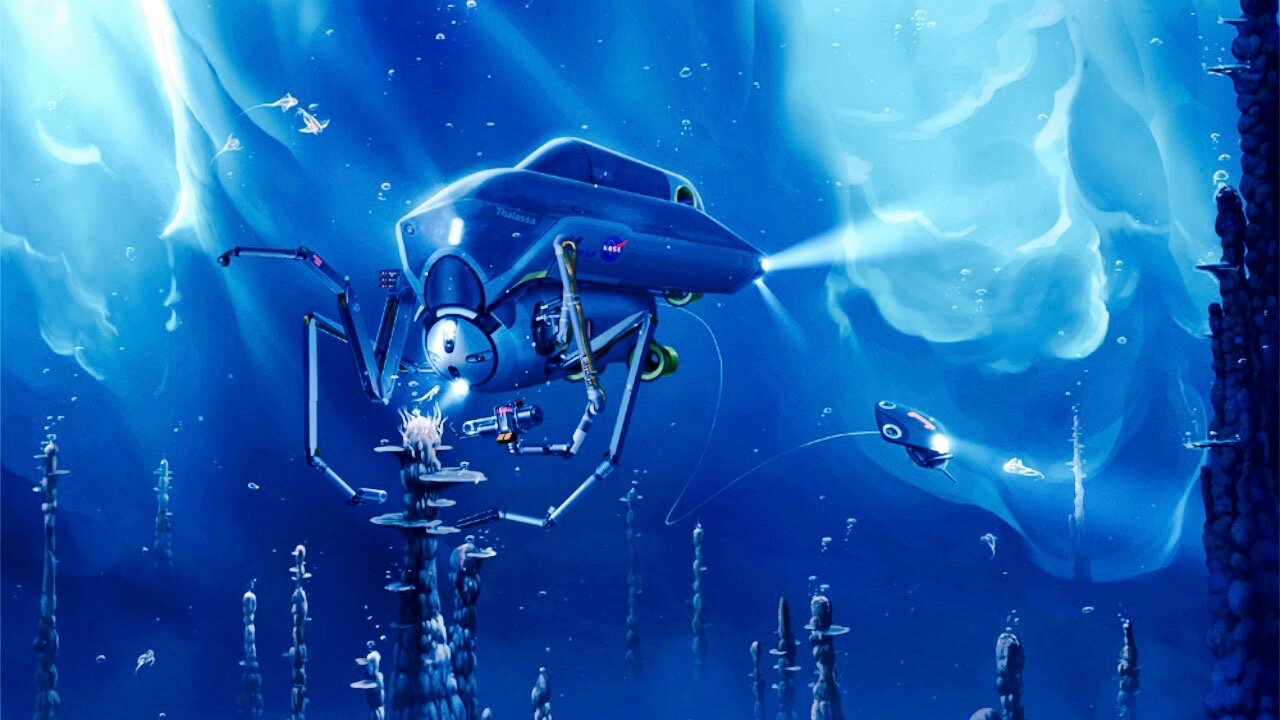Premium Only Content

Saturn's Moon Enceladus May Have Oceanic Alien Life Says NASA
Nasa announces alien life could be thriving on Saturn’s moon Enceladus. It might look like a frozen wasteland, but beneath the inhospitable surface of Saturn’s moon Enceladus, life could be thriving in warm underground seas, scientists believe. Nasa’s Cassini spacecraft has picked up the first evidence that chemical reactions are happening deep below the ice which could be creating an environment capable of supporting microbes. Experts said the discovery was ‘the last piece’ in the puzzle which proved that life was possible on Enceladus, a finding all the more remarkable because the small moon is 887 million miles away from the Sun.
Prof David Rothery, Professor of Planetary Geosciences, The Open University, said: “At present, we know of only one genesis of life, the one that led to us.
“If we knew that life had started independently in two places in our Solar System, then we could be pretty confident that life also got started on some of the tens of billions of planets and moons around other stars in our galaxy.”
Liquid oceans exist miles below the surface on Enceladus, so to find out what is happening in the underground seas scientists must rely on the plumes of spray which shoot up into the atmosphere through cracks in the ice.
In October 2015 Nasa sent Cassini into a deep dive through one of those plumes and discovered hydrogen and carbon dioxide.
In a report of their findings published today in the journal Science, scientists said that the ‘only plausible’ source for the hydrogen was chemical reactions between warm water and rocks on the ocean floor.
Crucially, if hydrogen is present it can mix with carbon dioxide to form methane, which is consumed by microbes in the deep, dark seas of our own planet.
“Saturn’s moon Enceladus has an ice-covered ocean, and a plume of material erupts from cracks in the ice,” said Professor Hunter Waite, of Southwest Research Institute (SwRI) in San Antonio, Principal Investigator for Cassini’s Mass Spectrometer instrument which detected the hydrogen.
“The plume contains chemical signatures of water-rock interaction between the ocean and a rocky core. We find that the most plausible source of this hydrogen is ongoing hydrothermal reactions of rock containing reduced minerals and organic materials.
“On the modern Earth, geochemically derived fuels such as hydrogen support thriving ecosystems even in the absence of sunlight.”
Enceladus is the sixth largest moon of Saturn, and was discovered in 1789 by the British astronomer William Herschel. It is around 310 miles in diameter and approximately 790 million miles from Earth.
Scientists had long suspected that liquid water could exist on the moon because of the extreme tidal forces acting on the satellite from Saturn’s gravity.
In 2005 Nasa launched Cassini to explore Saturn and its moons, and in 2015 discovered that Enceladus wobbled slightly as it orbited the planet, which could only be accounted for its outer shell was not frozen solid to its interior. A global ocean must be present under the icy surface, the experts concluded.
Since then, researchers have been studying data sent back from the spacecraft to see if the instruments on board had picked up any other clues that life might be present.
The new results are the strongest indication yet that Enceladus has all the conditions needed for life to form. If life is present, it could resemble single-celled tube-like extremophiles which have lived in hydrothermal vents on Earth for billions of years.
Prof Rothery, added: “We do now have the last piece of evidence needed to demonstrate that life is possible there.
“This is life that needs neither oxygen nor sunlight, and may be the form in which life on Earth began, before some of it adapted to other conditions.”
Enceladus is so far the furthest rock from the Sun that could support life in the Solar System. Some scientists think Uranus’ moon Ariel may have a liquid ocean, but it has not yet been proven.
Although scientists previously thought Enceladus’ icy crust was around 13 miles thick, recent data from Cassini has shown that at the south pole, it could be as little as three miles deep.
Music: Electric Central by Dhruva Aliman
Amazon - https://amzn.to/3eyYxeD
https://music.apple.com/us/artist/dhruva-aliman/363563637
https://dhruvaaliman.bandcamp.com/album/king-neptunes-travelling-merchants-and-their-adventures-in-and-beyond-the-sea
http://www.dhruvaaliman.com/
Spotify - https://open.spotify.com/artist/5XiFCr9iBKE6Cupltgnlet
#space
#astronomy
#explore
-
 52:51
52:51
Seeker Land
8 days agoMystery of the Ancient Druids - Lost Celtic Mystics - Full Documentary
1311 -
 2:11:29
2:11:29
vivafrei
19 hours agoEp. 253: Zelensky Dress-Down and Geopolitical Fallout! D.C. Court Rules AGAINST Trump Firing & MORE!
202K302 -
 2:13:14
2:13:14
Nerdrotic
12 hours ago $10.84 earnedMegalithomania! with Hugh Newman and Andrew Collins | Forbidden Frontier #092
90.3K11 -
 38:41
38:41
Sarah Westall
13 hours agoHealth Freedom Under Attack, Dr Robert Young Found Guilty on Suspicious Victimless Crime, Matt Hazen
96.6K9 -
 LIVE
LIVE
Vigilant News Network
12 hours agoDataRepublican Exposes the Shadow Government’s Darkest Secrets - Exclusive Interview | Media Blackout
2,003 watching -
 31:39
31:39
Peter Santenello
1 year agoStories From Vegas' Golden Era 🇺🇸
92.8K24 -
 LIVE
LIVE
The Why Files
16 hours agoLIVE: The Why Files 24/7 Stream n' Chat
1,418 watching -
 55:15
55:15
Russell Brand
1 day agoThe Truth About Big Pharma & COVID with Dr. Aseem Malhotra
194K11 -
 1:19:48
1:19:48
The Rubin Report
16 hours agoWhat the Trump Administration Must Do Instead of Revenge | Peter Thiel
146K173 -
 1:59:00
1:59:00
Steve-O's Wild Ride! Podcast
3 days ago $38.58 earnedPatrick Bet-David DESTROYS Steve-O's Dad - Wild Ride #252
160K57